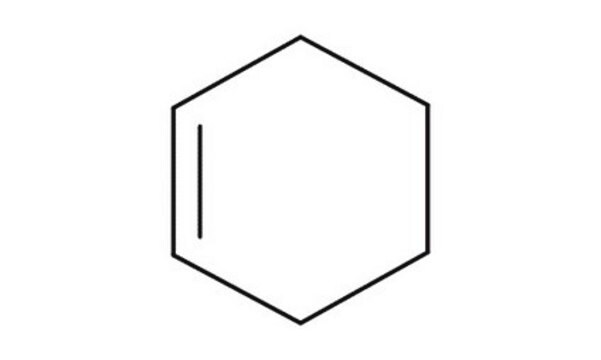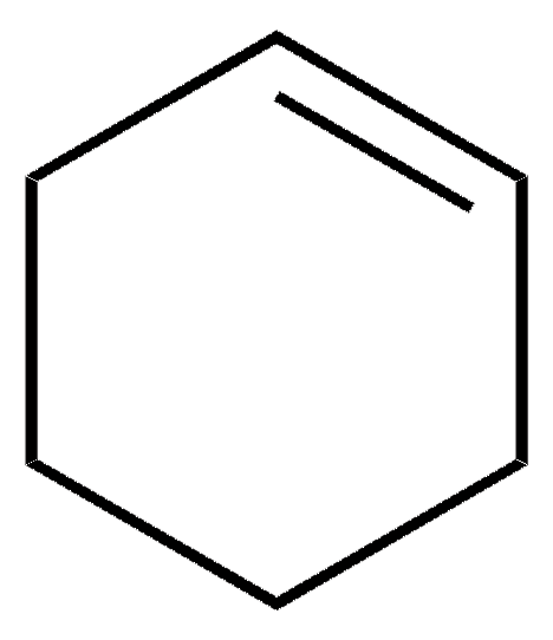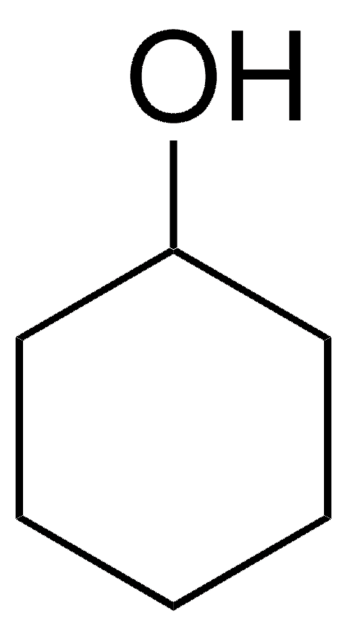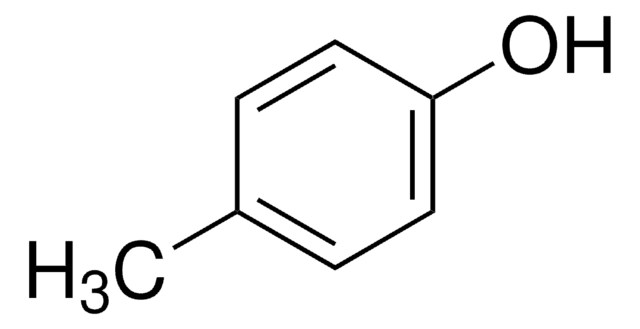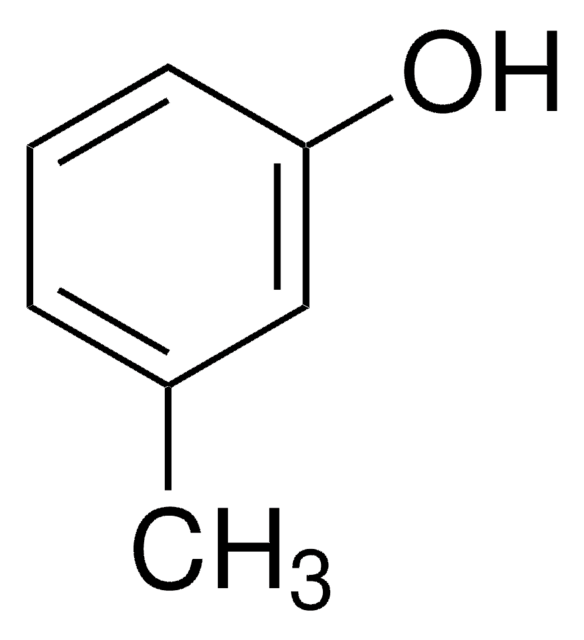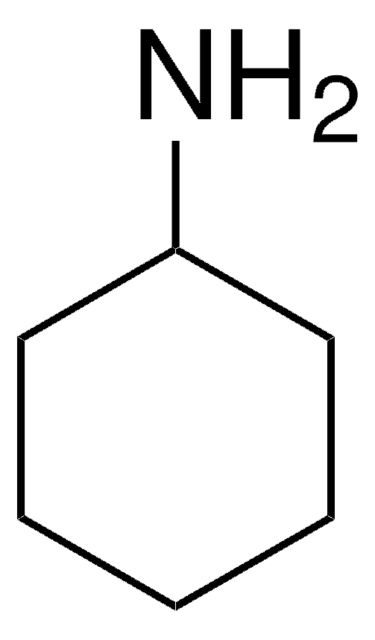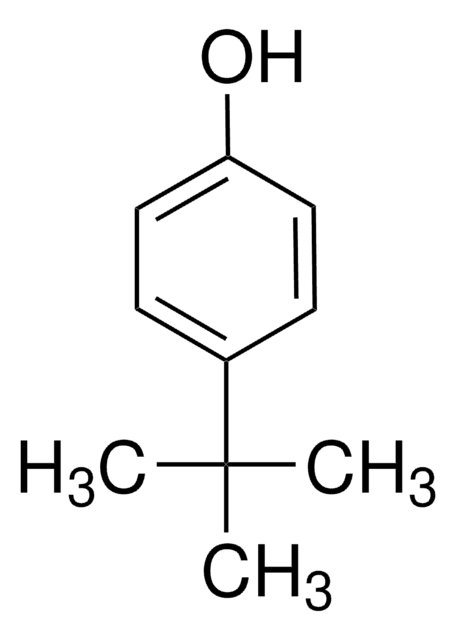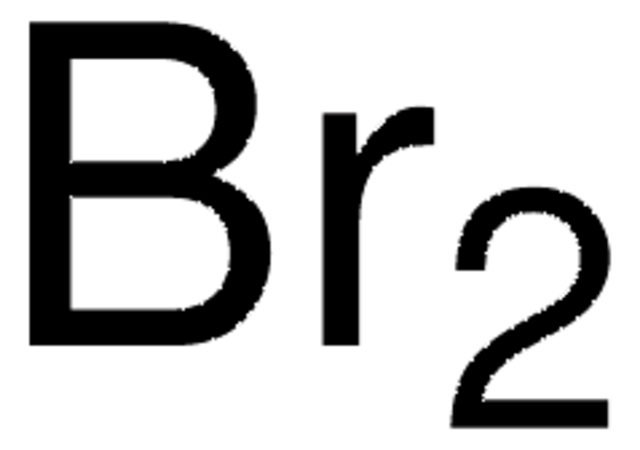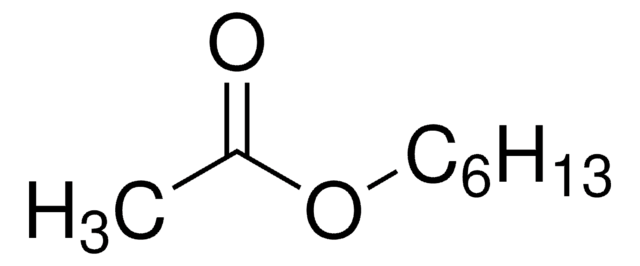44028
Cyclohexene
analytical standard, ≥99.5% (GC)
Synonym(s):
Tetrahydrobenzene
About This Item
Recommended Products
grade
analytical standard
Quality Level
vapor density
2.8 (vs air)
vapor pressure
160 mmHg ( 20 °C)
Assay
≥99.5% (GC)
autoignition temp.
590 °F
shelf life
limited shelf life, expiry date on the label
contains
~0.01% 2,6-di-tert-butyl-4-methylphenol as stabilizer
expl. lim.
5 %
technique(s)
HPLC: suitable
gas chromatography (GC): suitable
refractive index
n20/D 1.446 (lit.)
n20/D 1.446
bp
83 °C (lit.)
mp
−104 °C (lit.)
density
0.811 g/mL at 25 °C (lit.)
application(s)
environmental
petroleum
format
neat
SMILES string
C1CCC=CC1
InChI
1S/C6H10/c1-2-4-6-5-3-1/h1-2H,3-6H2
InChI key
HGCIXCUEYOPUTN-UHFFFAOYSA-N
Looking for similar products? Visit Product Comparison Guide
Application
Signal Word
Danger
Hazard Statements
Precautionary Statements
Hazard Classifications
Acute Tox. 4 Oral - Aquatic Chronic 2 - Asp. Tox. 1 - Flam. Liq. 2
Storage Class Code
3 - Flammable liquids
WGK
WGK 2
Flash Point(F)
1.4 °F
Flash Point(C)
-17 °C
Personal Protective Equipment
Regulatory Listings
Regulatory Listings are mainly provided for chemical products. Only limited information can be provided here for non-chemical products. No entry means none of the components are listed. It is the user’s obligation to ensure the safe and legal use of the product.
PRTR
Class I Designated Chemical Substances
FSL
Group 4: Flammable liquids
Type 1 petroleums
Hazardous rank II
Water insoluble liquid
ISHL Indicated Name
Substances Subject to be Indicated Names
ISHL Notified Names
Substances Subject to be Notified Names
JAN Code
44028-10ML-F:4548173962368
44028-BULK-F:
44028-5ML-F:4548173962375
44028-VAR-F:
Choose from one of the most recent versions:
Already Own This Product?
Find documentation for the products that you have recently purchased in the Document Library.
Customers Also Viewed
Our team of scientists has experience in all areas of research including Life Science, Material Science, Chemical Synthesis, Chromatography, Analytical and many others.
Contact Technical Service